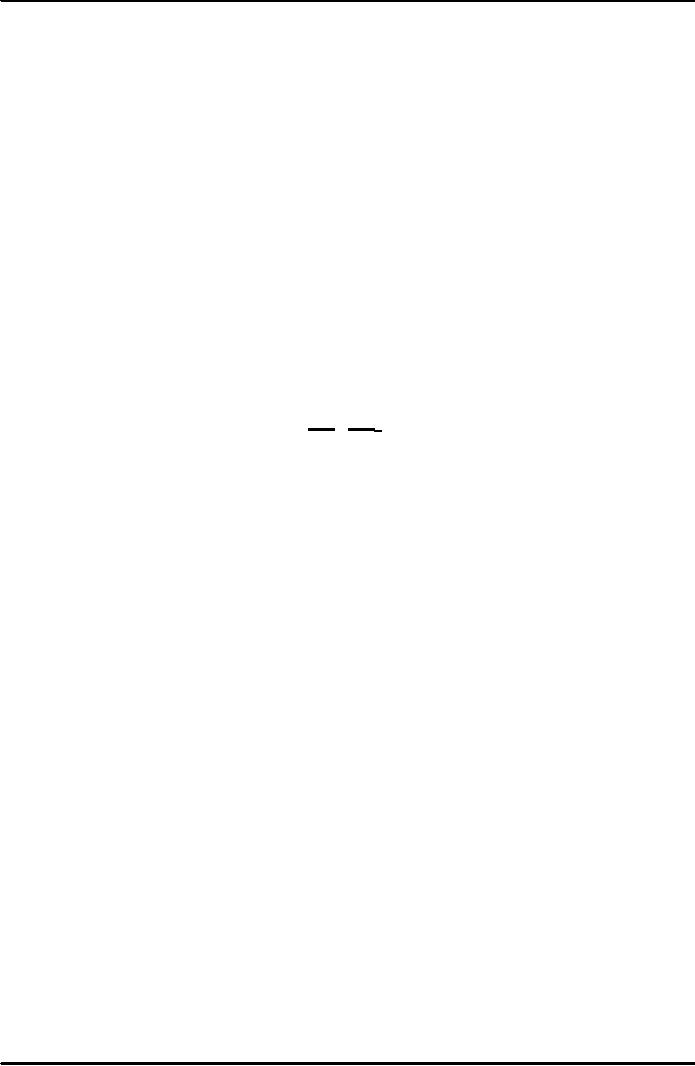 |

Introduction
to Economics ECO401
VU
Lesson
4.3
BACKGROUND
TO DEMAND/CONSUMPTION
(CONTINUED................)
The
Indifference Curve
Approach:
This
ordinal approach to utility
consists in asking the
question as to whether the
consumer
prefers
one combination or bundle of
goods to another combination or
bundle of goods.
Ordinal
approaches do not require a
"measurement" of the utility a
person gains, rather, only
a
ranking
of the various bundles in
order of preference.
An
indifference curve is a line
which charts out all
the different points on
which the consumer
is
indifferent with respect to
the utility he derives (in
other words it is a combination of
all equi-
utility
points). It is drawn in goods
space, i.e. a good Y on the
vertical axis and a good X
on the
horizontal
axis.
Indifference
curves are bowed in towards
the origin. In other words
its slope decreases
(in
absolute
terms) as we move down along
the curve from left to
right.
The
average slope
of
the indifference curve
between any two points is
given by the change
in
the
quantity of good Y divided by
change in the quantity of
good X. This is called the
marginal
rate
of substitution (MRS).
A
diminishing marginal rate of
substitution (MRS) is related to
the principle of
diminishing
marginal
utility. MRS is equal to the
ratio of the marginal
utility of X to the marginal
utility of Y.
dY
= MUX =
MRS
dX
MUY
The
indifference curve for
perfect
substitutes is a straight
line, while it is L-shaped
for
perfect
compliments.
An
indifference map shows a
number of indifference curves
corresponding to different
levels
of
utility. A higher indifference
curve corresponds to a higher
level of utility.
Indifference
curves never
intersect.
The
Budget Line and Indifference
curves:
The
budget line shows various
combinations of 2 goods X & Y that
can be purchased. Its
slope
Px/PY is called input
price ratio.
The
budget line can shift
due to changes in total
budget and the relative
price ratio Px/PY. If
money
income rises, the budget
line will shift outwards
(parallel to the initial
budget line). If the
relative
price ratio changes, the
slope of the budget line
changes.
The
optimum consumption point
for the consumer is where
the budget line is tangent
to
the
highest possible indifference
curve. At such a point, the
slopes of the indifference
curve
and
the budget line are
equal. In other words: MRS =
Px/Py = ΔY/ΔX =
MUx/MUy.
Just
as we can use indifference
analysis to show the
combination of goods that
maximizes
utility
for a given budget, so too
we can show the least-cost
combination of goods that
yields a
given
level of utility.
31
Table of Contents:
- INTRODUCTION TO ECONOMICS:Economic Systems
- INTRODUCTION TO ECONOMICS (CONTINUED………):Opportunity Cost
- DEMAND, SUPPLY AND EQUILIBRIUM:Goods Market and Factors Market
- DEMAND, SUPPLY AND EQUILIBRIUM (CONTINUED……..)
- DEMAND, SUPPLY AND EQUILIBRIUM (CONTINUED……..):Equilibrium
- ELASTICITIES:Price Elasticity of Demand, Point Elasticity, Arc Elasticity
- ELASTICITIES (CONTINUED………….):Total revenue and Elasticity
- ELASTICITIES (CONTINUED………….):Short Run and Long Run, Incidence of Taxation
- BACKGROUND TO DEMAND/CONSUMPTION:CONSUMER BEHAVIOR
- BACKGROUND TO DEMAND/CONSUMPTION (CONTINUED…………….)
- BACKGROUND TO DEMAND/CONSUMPTION (CONTINUED…………….)The Indifference Curve Approach
- BACKGROUND TO DEMAND/CONSUMPTION (CONTINUED…………….):Normal Goods and Giffen Good
- BACKGROUND TO SUPPLY/COSTS:PRODUCTIVE THEORY
- BACKGROUND TO SUPPLY/COSTS (CONTINUED…………..):The Scale of Production
- BACKGROUND TO SUPPLY/COSTS (CONTINUED…………..):Isoquant
- BACKGROUND TO SUPPLY/COSTS (CONTINUED…………..):COSTS
- BACKGROUND TO SUPPLY/COSTS (CONTINUED…………..):REVENUES
- BACKGROUND TO SUPPLY/COSTS (CONTINUED…………..):PROFIT MAXIMISATION
- MARKET STRUCTURES:PERFECT COMPETITION, Allocative efficiency
- MARKET STRUCTURES (CONTINUED………..):MONOPOLY
- MARKET STRUCTURES (CONTINUED………..):PRICE DISCRIMINATION
- MARKET STRUCTURES (CONTINUED………..):OLIGOPOLY
- SELECTED ISSUES IN MICROECONOMICS:WELFARE ECONOMICS
- SELECTED ISSUES IN MICROECONOMICS (CONTINUED……………)
- INTRODUCTION TO MACROECONOMICS:Price Level and its Effects:
- INTRODUCTION TO MACROECONOMICS (CONTINUED………..)
- INTRODUCTION TO MACROECONOMICS (CONTINUED………..):The Monetarist School
- THE USE OF MACROECONOMIC DATA, AND THE DEFINITION AND ACCOUNTING OF NATIONAL INCOME
- THE USE OF MACROECONOMIC DATA, AND THE DEFINITION AND ACCOUNTING OF NATIONAL INCOME (CONTINUED……………..)
- MACROECONOMIC EQUILIBRIUM & VARIABLES; THE DETERMINATION OF EQUILIBRIUM INCOME
- MACROECONOMIC EQUILIBRIUM & VARIABLES; THE DETERMINATION OF EQUILIBRIUM INCOME (CONTINUED………..)
- MACROECONOMIC EQUILIBRIUM & VARIABLES; THE DETERMINATION OF EQUILIBRIUM INCOME (CONTINUED………..):The Accelerator
- THE FOUR BIG MACROECONOMIC ISSUES AND THEIR INTER-RELATIONSHIPS
- THE FOUR BIG MACROECONOMIC ISSUES AND THEIR INTER-RELATIONSHIPS (CONTINUED…….)
- THE FOUR BIG MACROECONOMIC ISSUES AND THEIR INTER-RELATIONSHIPS (CONTINUED…….):Causes of Inflation
- THE FOUR BIG MACROECONOMIC ISSUES AND THEIR INTER-RELATIONSHIPS (CONTINUED…….):BALANCE OF PAYMENTS
- THE FOUR BIG MACROECONOMIC ISSUES AND THEIR INTER-RELATIONSHIPS (CONTINUED…….):GROWTH
- THE FOUR BIG MACROECONOMIC ISSUES AND THEIR INTER-RELATIONSHIPS (CONTINUED…….):Land
- THE FOUR BIG MACROECONOMIC ISSUES AND THEIR INTER-RELATIONSHIPS (CONTINUED…….):Growth-inflation
- FISCAL POLICY AND TAXATION:Budget Deficit, Budget Surplus and Balanced Budget
- MONEY, CENTRAL BANKING AND MONETARY POLICY
- MONEY, CENTRAL BANKING AND MONETARY POLICY (CONTINUED…….)
- JOINT EQUILIBRIUM IN THE MONEY AND GOODS MARKETS: THE IS-LM FRAMEWORK
- AN INTRODUCTION TO INTERNATIONAL TRADE AND FINANCE
- PROBLEMS OF LOWER INCOME COUNTRIES:Poverty trap theories: